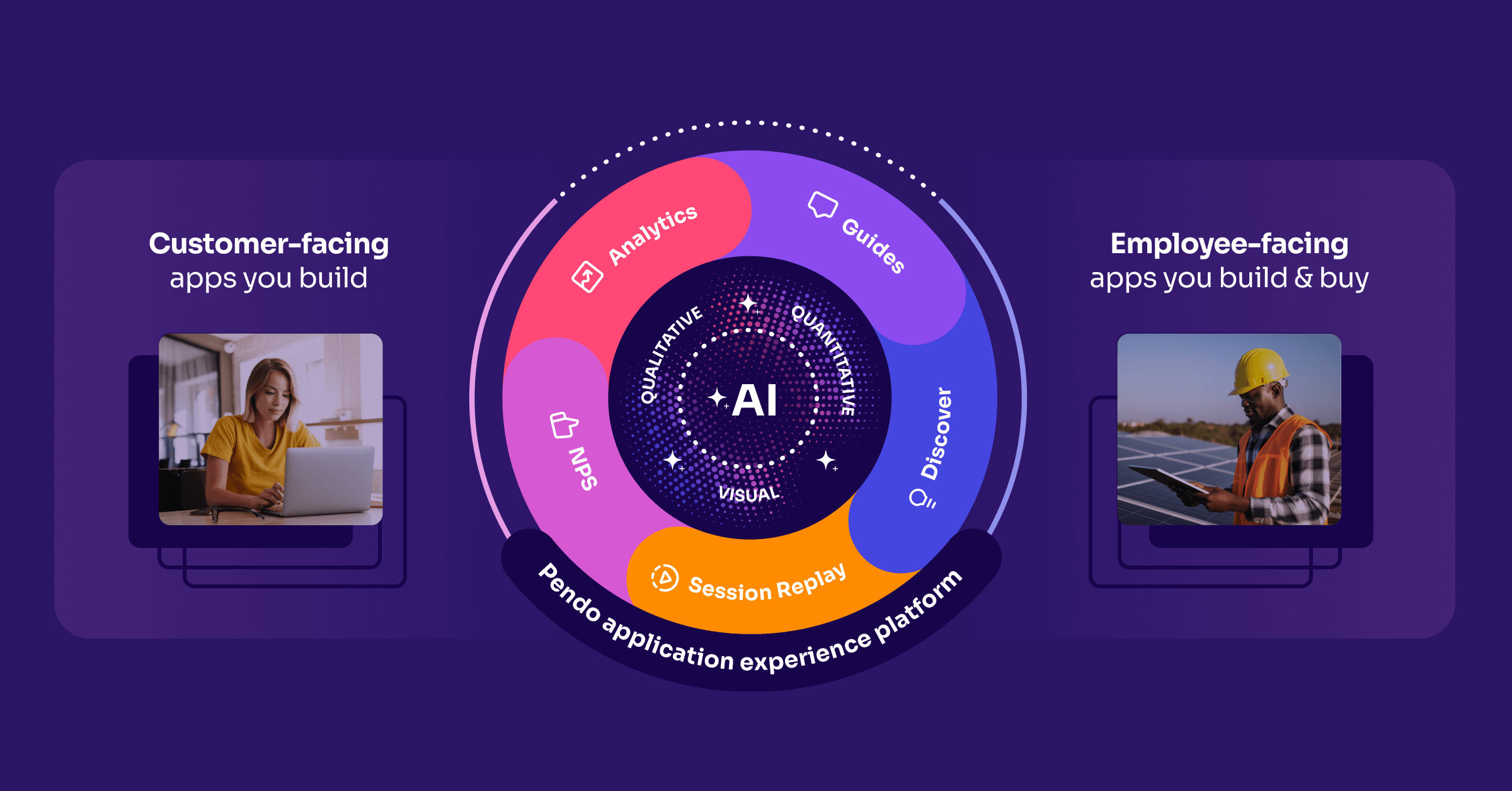To form the right business strategy, leadership teams need to factor in lots of moving parts. The economy, talent, and technology all present challenges and opportunities to any organization trying to find the best path to growth and prosperity. But no matter how their greater strategic vision evolves, one priority remains constant: driving greater efficiency.
At its most basic, efficiency means doing more with less. For product leaders, it means honing your product stack to fewer solutions without compromising on your ability to execute. As you consider how best to consolidate your stack, here are three key principles to keep in mind.
1. Cut your budget, not your capabilities
When it comes to consolidating your product stack, you want to be able to do the same (or ideally, even more) things with fewer apps. That means doing away with siloed point solutions in favor of platform solutions. Why spend money on separate analytics, in-app guidance, and feedback apps for your product when doing so not only costs more, but makes it more difficult for these tools to work in concert with one another?
Think about how improving your product and the business results it drives actually works. product analytics, in-app messaging, and customer feedback don’t exist or add value in isolation. So why build a stack that’s set up as if they do? The best way to optimize your product is via a product experience platform, a comprehensive solution that offers these abilities and more, all in one.
With a platform like Pendo, teams get rich insights into user engagement and behavior, the ability to seamlessly onboard and support them in their journey, and the means to make the voice of the customer a part of their optimization strategy and product roadmap.
2. Reduce technical headaches, not just costs
Choosing a product experience platform over point solutions isn’t just about saving money (although it certainly helps teams do so). It’s also about heading off technical headaches before they happen. Setting up custom integrations between numerous point solutions wastes time and precious engineering resources. Why suffer through the inevitable dev headaches, breakages between apps, and blockers to scaling that come with that?
A platform like Pendo is built for the tools within it to work together. What’s more, it comes with robust integrations for CRM (Salesforce, etc.) solutions, collaboration tools (Okta), and many other key apps, all with no developer resources required.

3. Unify your data for a holistic view into your product
Point solutions make it unnecessarily hard to get a holistic, unified view into your user journey. With data siloed across so many apps, it becomes difficult to connect the dots and understand what’s actually happening. This leads to communication breakdowns and lost holistic insights. It also hinders actions to support customers and drive better business outcomes.
An effective consolidation of your product stack is one that makes it easy for you to have a clear, comprehensive view of your users. Pendo helps teams harness the synergies that come from having this single source of truth for data in order to better scale product work and results.
In consolidating their product stack, businesses want to be able to rationalize what they’re spending, modernize their tools and operations, and put themselves in a position to drive continued growth and optimizations. Choosing a product experience platform helps achieve all these goals. There’s just no point in sticking with point solutions any longer.
Ready to learn more about the power of Pendo’s all-in-one platform? Take a tour of the product here.


